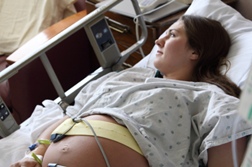
Epilepsy man's 'thank you' for help during fit
By Stephanie Jones-BerryNovember 10, 2010
A PENSIONER who had an epileptic seizure in Guildford town centre while waiting for a bus now wants to thank the people who came to his aid.
Graham Block, 71, had been visiting the RHS Wisley gardens to see the autumnal colours when a delay meant he arrived at the Friary bus station at 4.15pm last Wednesday (November 3), with an hour to wait for his next connection.
By 5.30pm, Mr Block’s usual bus had not arrived and the seizure hit as he was asking a member of staff what was happening. Mr Block said: “The lights were very bright, so I had a blackout. Bright lights, stress and camera flashes can bring on my blackouts. When this one came on I couldn’t get outside in time. I felt it coming on and got out my special card that I carry in different languages explaining my condition. A young lady and a bus inspector who were there were very concerned. The bus inspector arranged a bus to take me home to Wood Street. I just want to thank them both.”
The former insurance clerk has suffered with epilepsy since the age of 24 but said that in recent years the condition had become more manageable. He said: “I have had epilepsy for the past 47 years and in the last few years it has faded away. I used to have big fits, preceded by blinding flashes but I have learned to read the signs and now can usually get out in time to stop it happening. I still can’t go out in the evening – even a church hall has lights that are too bright.”
Louise Whalley, from charity Epilepsy Action, said: “We’re delighted to hear that people in the local community assisted someone who was having an epileptic seizure in public. It’s clear that the epilepsy awareness information this man was carrying was vital in getting him the help and support he needed. Carrying medical ID lets people know what to do in case of a seizure and informs medical professionals that a person has epilepsy. We would recommend that all people with epilepsy carry a medical awareness card with them. They may also want to consider wearing identity jewellery.”
Mr Block believes his condition may have been triggered by playing lacrosse as a young man. His wife, Janet, helps him to manage his medical condition as she is able to read the signals as well. Mr Block said: “She makes me go outside. Every Saturday we go to the supermarket and I often have to stand outside.”
Epilepsy Action provides a range of epilepsy awareness cards free of charge from www.epilepsy.org.uk/shop.
.







 Cindy (not her real name) says her daughter was diagnosed with fetal alcohol syndrome because "she has six of the 10 facial characteristics" that define the syndrome.
Cindy (not her real name) says her daughter was diagnosed with fetal alcohol syndrome because "she has six of the 10 facial characteristics" that define the syndrome. 









